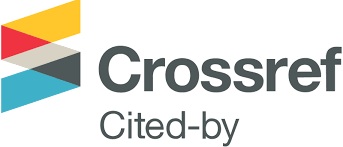Information, Entropy, and the Zeta Function
DOI:
https://doi.org/10.59973/ipil.128Keywords:
Information, Entropy, Prime factorizationReferences
Melvin M. Vopson, (2024), The second law of infodynamics and its implications for the simulated universe hypothesis, AIP Advances, 13, 10. DOI: https://doi.org/10.1063/5.0173278
Melvin M. Vopson, (2024), Introducing the Second Law of Infodynamics and its Implications, IPI Lecture, 21st September. https://youtu.be/Wi8OYvqQWUU
W. H. Zurek (Editor), (2023), Complexity, Entropy, and the Physics of Information, Vols I and II, Santa Fe Institute Press.
M. Aoyagi and S.Watanabe,(2009) The zeta function for learning theory and resolution of singularities, More Progresses in Analysis. May 2009, 279-288. DOI: https://doi.org/10.1142/9789812835635_0026
5. P. Tempesta, (2011), Group entropies, correlation laws and zeta functions, ARXIV 1105.1935. DOI: https://doi.org/10.1103/PhysRevE.84.021121
N. Combe, Y.I. Manin, M. Marcolli, (2022), Geometry of information: Classical and quantum aspects, Theoretical Computer Science, 908, 2-27. DOI: https://doi.org/10.1016/j.tcs.2021.10.020
Pain, R.H., and Robson, B. (1970) Analysis of the Code Relating Sequence to Conformation in Globular Proteins, Nature (1970), 227, 62-63. DOI: https://doi.org/10.1038/227062a0
Robson, B, and Pain, R. H. (1971) Analysis of the Code Relating Sequence to Conformation in Globular Proteins: Possible Implications for the Mechanism of Formation of Helical Regions, J. Mol. Biol. 58, 237-256. DOI: https://doi.org/10.1016/0022-2836(71)90243-9
9. Robson, B. and Pain, R. H (1972) Directional Information Transfer in Protein Helices, Nature New Biology (1972) 238, 107-108. DOI: https://doi.org/10.1038/newbio238107a0
Robson, B. (1974) Analysis of the Code Relating Sequence to Conformation inGlobular Proteins: Theory and Application of Expected Information, B. Robson, Biochem. J. (1974) 141, 853-867. DOI: https://doi.org/10.1042/bj1410853
J. Pearl, (1985), Bayesian Networks: A Model of Self-Activated Memory for Evidential Reasoning, (UCLA Technical Report CSD-850017). Proceedings of the 7th Conference of the Cognitive Science Society, University of California, Irvine, CA. pp. 329–334.
Robson, B. (2004) The Dragon on the Gold: Myths and Realities for Data Mining in Biotechnology using Digital and Molecular Libraries, J. Proteome Res. (Am. Chem. Soc.) 3 (6), 1113 - 9. DOI: https://doi.org/10.1021/pr0499242
13. Robson, B (2005) Clinical and Pharmacogenomic Data Mining: 3. Zeta Theory As a General Tactic for Clinical Bioinformatics, J. Proteome Res. (Am. Che. Soc.) 4(2); 445-455. DOI: https://doi.org/10.1021/pr049800p
B. Robson and O.K. Baek, (2024), Use of a theory of expected information for sparse data and adverse events in clinical trials and other biomedical studies, Information Sciences, Volume 680, October, 121027. DOI: https://doi.org/10.1016/j.ins.2024.121027
B. Robson and R. Cooper, (2024) Glass Box and Black Box Machine Learning Approaches to Exploit Compositional Descriptors of Molecules in Drug Discovery and Aid the Medicinal Chemist, ChemMedChem, (Wiley), e202400169. DOI: https://doi.org/10.1002/cmdc.202400169
B. Robson (2019), Bidirectional General Graphs for inference. Principles and implications for medicine, Computers in Biology and Medicine, 10, 382-399. DOI: https://doi.org/10.1016/j.compbiomed.2019.04.005

Downloads
Published
How to Cite
Issue
Section
License
Copyright (c) 2024 Barry Robson

This work is licensed under a Creative Commons Attribution 4.0 International License.














